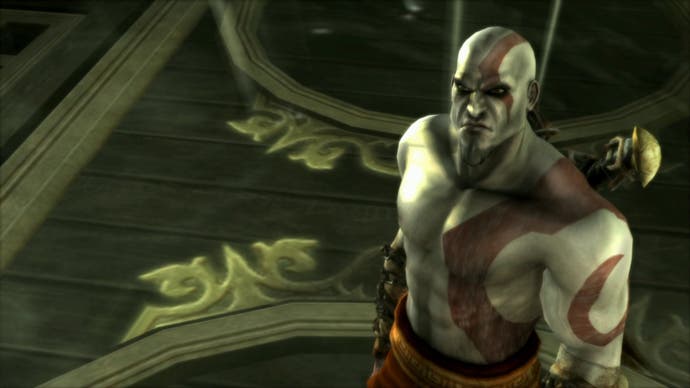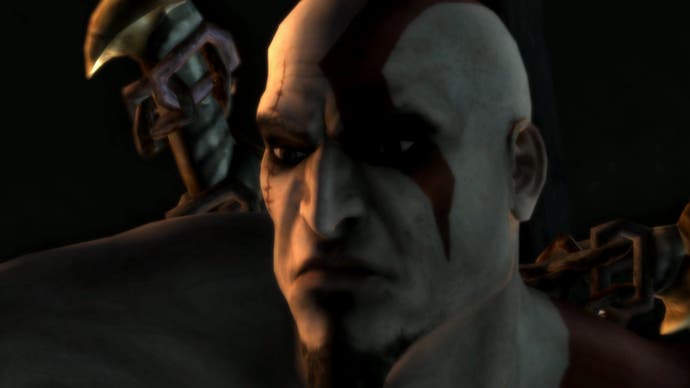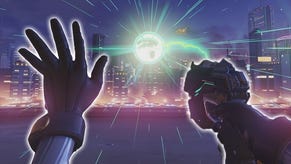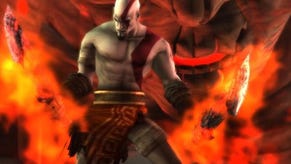Tech Analysis: God of War Collection Volume II
Still Spartan?
When we took a look at the original God of War Collection, just about the only gripe we had with it concerned the FMV cinematics, which were upscaled from the SD originals and looked rather rough in contrast with the pristine nature of the 720p "remix". This is a criticism that Ready at Dawn acknowledged and set out to improve with its new release.
"Between Chains of Olympus and Ghost of Sparta we had over an hour of pre-rendered cinematics, and the gap in video resolution between our PSP source footage and full HD was so extreme that no matter how many custom video up-scale solutions we tried, there was just a glaring quality difference between the 1080p real-time gameplay and the video," Nathan Phail-Liff says.
"It was pretty demoralising for us to play the game in beautiful HD and hit a cinematic trigger where Kratos looked like he was rendered through a dirty sock, so we realised we would just have to bite the bullet and properly re-render all cinematics in full 1080p."


The solution was to re-run each scene on the new PS3 engine, capture them at 1080p, and then add in post-process effects from scratch. Phail-Liff reckons that this produces a "seamless" experience, but the drop from 60FPS gameplay to 30FPS video is a bit jarring, and the post-processing produces a very different look from the pristine in-game visuals. It's also clear from some of the videos that a few HD elements weren't available, so there is still the occasional bit of upscaling in there.
All told though, it's a massive improvement over the quality of cinematics in the original God of War Collection, and Ready at Dawn should be congratulated for the sheer effort it put into this, even if the result isn't quite as seamless as we were hoping for.
The developer should definitely get a pat on the back for making use of the gargantuan storage that the Blu-ray disc format offers. The original PSP titles were in the region of 1.5GB to 1.7GB - effectively maxing out the UMD format. The new PS3 collection uses around 18GB of space on the BD (!) and the vast majority of that is dedicated to the remastered video sequences. These appear to be using Sony's own h264-based PAMF encoding tools. This is perhaps extravagant for a mere hour's worth of video, but if you've got the space, why not use it?




The final tentpole enhancement Ready at Dawn has added to the new God of War Collection is support for stereoscopic 3D. For those with the appropriate playback tech (or indeed a pair of anaglyph glasses), you can check out the first five minutes of both Chains of Olympus and Ghost of Sparta via YouTube's rather splendid 3D player - just make sure that you choose the 1080p versions of the videos in order to get the best picture quality.
In his PlayStation post blog, Nathan Phail-Liff discusses the 3D work and reckons that he "wouldn't want to play the games any other way after being able to experience it first-hand". He also points out some of the great work Ready at Dawn did to create an optimal 3D experience such as "gas near-screen fading on certain particles and camera focal plane compensation for a smooth and enjoyable 3D experience", and it's difficult to disagree with the conclusion that the implementation of stereoscopy has been handled well.
In common with THQ's excellent de Blob 2, which absolutely shines in 3D, it's definitely the case that the more simplistic visual style combined with intelligent use of the stereoscopic effect produces a very worthwhile experience. However, it does come at a cost: frame-rate takes a hit, dropping down from 60FPS to a consistent 30FPS. This only seems to change when cut-scenes are engaged, whereupon frame-rate appears to be unlocked, complete with very noticeable tearing, which can move from eye to eye, similar to the effect in WipEout HD's 3D mode.




The frame-rate drop might seem odd bearing in mind the relatively simplistic visuals. After all, the fill-rate requirement for two 720p images is a fair bit lower than a single 1080p framebuffer, which both games handle pretty well. Of course, the reality is that stereoscopic gameplay requires two independent viewpoints, meaning that geometry needs to be processed twice - so perhaps that turned out to be the bottleneck here. The reality is that the 3D mode can look exceptionally cool, particularly in the epic boss battles, but the elevation of the game to 60 frames per second is really what makes it feel so good to play.
In conclusion, Ready at Dawn has done some phenomenally good work here. The basic notion of PSP games designed for a miniscule 480x272 screen working well at full 1080p may well seem crazy, but the reality is that the HD remastering undertaken by the developer has resulted in exactly the kind of result we want to see from this kind of endeavour: Ghost of Sparta and Chains of Olympus have been liberated from the technical constraints of the original hardware and take on new life on the PlayStation 3. In short - a highly recommended release.










